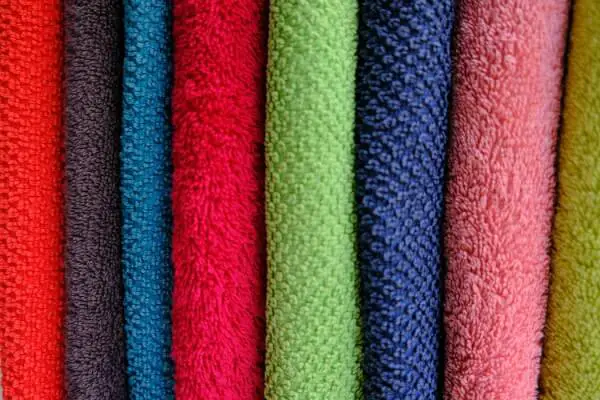Winter gear made of wool is the traditional choice. However, as the society becomes increasingly environmentally-conscious, they also start avoiding wool and going for the alternative—fleece. Made from recycled polyester, fleece is not only environmentally-friendly but also just as warm and more affordable than wool. Although it’s relatively affordable, you still won’t want to have to replace your fleece jacket with a new one after only a few uses—which leads us to the topic of how to wash fleece.
Considering it’s made from polyester, you’d expect washing fleece to be a breeze; it’s water-resistant, so surely a few minutes of mild tussle with water in the washing machine wouldn’t hurt it? It’s true that fleece comes equipped with water-repellent qualities, but this is exactly why you’d want to be careful about what you use to wash it. You’d want the fleece to retain its desirable qualities—namely, its warmth, softness, and water-resistance—as much as possible; you can only achieve this by figuring out what makes it tick and being attentive with the washing.
In this article, you’ll find detailed information about the do’s and don’ts on fleece-washing. We’ve geared our guideline towards providing you with the simplest, fastest, and most accurate ways to keep your fleece as soft and water-resistant as it was the day you first bought it.
The Do’s on Washing Fleece
Laundry business is sensitive business. One wrong move and you could end up with your pure white underwear dyed pink. The same applies to fleece. One wrong move and you could end up unwittingly breaking down the particles and fibers that gave the fleece its resistance to the elements in the first place. Worse, in a split second, your soft and smooth fleece could turn ugly, bumpy, and uncomfortable.
If you haven’t yet washed your fleece jacket and you’re here because you realize you need help to prevent it from becoming an ordeal, then hats off to you! Prevention really is better than cure—something that might not exist for fleece that has been ruined beyond the point of repair.
If you’re here because you’ve learned the hard way what kind of havoc uninformed washing could wreak on fleece, to ensure you’ll get it right the second time, here’s a step by step guide on how to wash fleece properly.
Step #1: Do Pay Attention to the Label
It’s human nature to ignore the manual and go straight for the goodies, but we would still like to recommend that you read the manufacturer’s instructions on how to treat the fleece first. We get what you’re thinking: “But isn’t that exactly what I’m doing here? Reading the instructions? What’s the point of reading this article if I have to rely on the tags in the end?”
The thing is, we would just like to make absolutely sure that you’re doing this right. Our method works perfectly on materials that are 100% polyester, but you never know what kind of substance could be mixed into the fabric these days. Especially if it has a large percentage of leather mixed in, you’ll want to treat the washing very differently.
You can find the tag on the inside of the jacket or the outside of the sleeping bag. Don’t worry, the letters might look small and intimidating at first glance, but there aren’t a lot of words printed on it; we wouldn’t be so cruel as to force you to read through the whole terms & conditions.
The moment you see the words 100% or perhaps even 95% polyester on the tag, you’re good to proceed with the instructions on this article.
Step #2: Do Choose Your Preferred Washing Method
There are two methods available to those of you who have set out on the path of proper fleece-washing:
- Use a Washing Machine. The best part about fleece is that it is machine-washable. It is okay to wash the fleece with other types of fabric in the same cycle. Just make sure that you follow the universally-acknowledged rule of never throwing dark-colored clothes into the machine alongside light-colored clothes.
- Hand-Wash It. If you prefer to do it the old-fashioned way or if your washing machine is refusing to cooperate when you need your fleece jacket to be ready for use ASAP, you will be glad to know that you can hand-wash fleece.
No matter which method you plan to go for, the washing procedure is basically the same. The key lies in choosing the washing solution carefully and prepping the fleece properly before you scrub the dirt out of it (whether using the machine or your own two hands).
Step #3: Do Prep the Fleece
It’s tempting to push that “ON” button right away or to roll up your sleeves and get down to the good old hard work, but before you do that, make sure you prep the fleece properly because there are a few pitfalls that you’ll want to avoid:
- First, you’ll have to turn the clothes inside out. This will prevent pills from appearing on your clothes and making it appear like a molting bird.
- Make sure that there is no lint on the clothes. If you wash the fleece while there is still piles of lint on it, it will be too late by the time you’re done. Lint and fleece are a match made in heaven—they are nigh impossible to separate once they have joined forces. Either use a lint roller or a brush to clean the fabric.
- On that note, we’ve already mentioned that you shouldn’t wash dark-colored clothes in the same cycle as light-colored clothes, and vice versa. One more thing before we move on to the next step: make sure there are no lint-shedding clothes in the cycle.
Step #4: Do Prep the Washing Machine
We’re sure you’re quite familiar with how to operate a washing machine, so we will not be elaborating on that excessively. We will only explain how you should set it up specifically when dealing with fleece:
- Make sure to use cold water, as warm water may cause the fabric to pill, even if you have turned the clothes inside out.
- We recommend that you use liquid detergent, but if you prefer powder detergent, that’s fine too; just dilute it in water first. We also recommend using mild detergents designed for cold water instead of all-purpose detergents. Strong detergents could very well wreak havoc on the fleece’s water resistance.
- Set the cycle to gentle washing.
If you chose to wash the fleece by hand, here’s how you do it:
- Turn on the faucet and fill a shallow tub or the sink with cold water.
- Wet the fleece.
- Mix in mild detergents designed to work best in cold water.
- Use both hands to rub the fabric together until it starts to foam. You can also use a washing board to handle a particularly stubborn stain.
- Rinse the fabric with clean water—preferably several times until all the foam is out.
- Squeeze as much of the water as you can out of the fabric, flap it several times to smoothen it out, then hang it out to air-dry.
Step #5: Do Dry the Fleece
The best way to dry a fleece fabric after a good washing is to hang it up. Air-drying is the safest method for fleece. It won’t mess with the fabric’s resistance to the elements in any way; also, since fleece is famous for its quick-drying properties, it wouldn’t take more than four hours for your clothes to dry.
If it’s an emergency and you need your jacket to be wearable as quickly as possible, you can also put it in the dryer. Make sure to set it to the lowest level of intensity possible. This procedure is generally safe, but it’s better to play it safe with fleece. Also, don’t leave it in the dryer for too long. Pull it out as quickly as you can.
Step #6: Do Store the Fleece Properly
Congratulations, you’ve safely gone through the process of cleaning your fleece fabric! Not as difficult as you’d imagined, was it? Now you just have to store it for later use. We also have some useful tips to help you with that:
- First things first, make sure that the fabric is completely dry before you put it back in the closet to await your next outdoors trip. If the fabric isn’t completely dry, putting it in a dark, damp place will cause it to smell.
- Secondly, make sure that there are no remaining stains on the fabric. You’ve done your best to clean it while following the previous steps, but it wouldn’t hurt to do one last once-over. If you happen to miss a stain and it is left to oxidize in the closet for prolonged periods of time, you would have a hell of a time getting it out later.
- Thirdly, don’t forget to protect it from the threat of insects that love to gnaw on fabrics. Due to its synthetic nature, fleece is not considered a gourmet meal by these insects the way wool is. Still, it wouldn’t hurt to be careful. To ward off these annoying moths, simply purchase scented closet chips and put it in the closet. Go for cedar or lavender-scented chips for maximum effectiveness.
The Dont’s on Washing Fleece
So you’ve gone and bought your first fleece jacket. Excitedly, you wear it on your next trip to the mountains in winter. It gives you adequate wind protection, doesn’t get saturated with water quickly, and even when it does get saturated, all you have to do is hang it out to dry for one night (but not right next to the crackling fire, because fleece could melt when subjected to extreme heat). When morning comes, you are able to wear the jacket again—warm and toasty as usual.
Then, you get home and you prep the fleece jacket for machine-washing as we’ve explained above. You followed our suggestions perfectly, except you thought about adding some extra procedures to better please the fleece jacket that has served you so well.
While we wouldn’t go so far as to say that you absolutely cannot add any extra procedures on top of everything we’ve listed above, we do recommend that you proceed with caution. Below, we’ve listed certain procedures you should avoid at all costs because they could undo all your hard work in keeping the fleece nice and water-resistant:
Rule #1: Don’t Iron It
We’ve mentioned that you should avoid washing fleece using a warm cycle, and there’s a reason for that. Made of polyester, fleece has relatively low heat resistance. Washing it with warm water may only cause it to pill, but ironing it could very well cause it to melt, just like plastic.
Fleece is a naturally wrinkle-resistant fabric anyway, so there should be no need for you to iron it. However, if for some reason you absolutely have to iron fleece, here’s a guideline on how to minimalize the damage done to it:
- Wash the fabric following the instructions we’ve explained above.
- Put it in the dryer at the lowest possible heat setting, but don’t leave it there until it’s completely dry. Take it out once it has warmed up, but it should still be relatively damp. You can also hang it out to air-dry then take it down before it is completely dry.
- Turn on the iron and preheat it, but make sure to set it to the lowest possible heat setting, just like with the dryer.
- No matter what, you shouldn’t apply the flat side of the iron directly onto the fleece. Instead, take a thin sheet of cotton out, then place it over the fleece.
- You can iron it freely afterward as the cotton absorbs the brunt of the heat but still allows enough to seep through and smoothen out what few wrinkles are plaguing your fleece.
- We probably don’t really need to remind you of this, but make sure to immediately hang the jacket up afterward as you don’t want it to develop more wrinkles after being forced to sit outside right after ironing for too long.
Rule #2: Don’t Use Bleach or Fabric Softener
Fleece does not mix well with any kind of chemicals. Excessive contact with overpowering solutions could compromise the material’s water resistance. That’s the reason why we urged you to use only mild detergents when dealing with fleece. Detergent is unavoidable, but you should be able to do without bleach and fabric softener.
If you really want your fleece to appear lighter in color, simply hang it out to dry for quite a bit longer than the allotted four hours. Sunlight is a natural bleacher.
Another viable method is to add borax to the water. Yes, we mentioned that fleece should come into as little contact with chemicals as possible, but this is one of the few compounds that wouldn’t do much damage to fleece, if any. Still, to be on the safe side, be sure to use borax sparingly.
Rule #3: Don’t Dry-Clean or Steam It
The same logic as why you shouldn’t iron your fleece applies to this one. Some people consider dry-cleaning to be the solution to everything laundry-related; when you have an expensive suit that you need to clean, more often than not your first thought would be to dry-clean it. Fact is, dry-cleaning would hurt fleece by exposing it to high heat.
Taking fleece’s low heat resistance into consideration, you should also avoid steaming the fabric. Air-drying it is the best way to go.
Wrap up
We all know the importance of wearing appropriate winter gear when going on a trip where it’s cold. True outdoor enthusiasts understand the value of fleece. It’s lighter in weight as compared to wool, takes less time to dry, supports the global effort of recycling plastic because it’s made of 100% polyester, water-resistant, and purchasing one won’t break the bank.
Due to its versatility, fleece is everywhere these days. Go to any outdoor gear store, and you’ll easily find fleece jackets, blankets, and sleeping bags lined up neatly along the aisle. What you need to realize is that these freshly-manufactured fleece garments are in their peak condition, but they may not be able to stay on top of things for long if you don’t wash them the way they are meant to be washed.
We hope you’ve managed to stumble upon this piece before you were forced to learn the hard way how fragile fleece can be especially when it comes into contact with high temperatures.
The proper procedure really isn’t all that complicated. To sum everything up, screen the clothing you put into the same washing cycle as the fleece clothing carefully, use cold water, mild detergent, and finally, air-dry it. Wash it properly, and that fleece jacket will surely serve you well for many years to come.
Featured Image Source: https://unsplash.com/photos/xrrL3AhYOps







